Key takeaways
- Activist teacher resources empower educators to inspire critical thinking and empathy in students by integrating advocacy into lessons.
- Blending art with science enhances understanding, encourages engagement, and nurtures diverse ways of thinking among students.
- Practical methods for integrating art include sketching concepts, storytelling, and collaborative projects, enriching classroom dynamics and communication.
- Challenges like time constraints and skepticism can be overcome by valuing creative activities as essential learning moments and utilizing simple, cost-effective materials.

Understanding activist teacher resources
Activist teacher resources are more than just materials—they’re tools that empower educators to challenge norms and inspire critical thinking. I remember feeling overwhelmed before I discovered these resources; they gave me fresh confidence to address complex issues in my classroom.
Have you ever wondered how a simple lesson plan could spark a deeper conversation about justice or equity? That’s exactly the power behind activist teacher resources. They invite us to engage students not only intellectually but emotionally, making learning meaningful and transformative.
Using these resources means stepping into a role where teaching meets advocacy. It’s not always easy, but I’ve seen firsthand how integrating activism into lessons fosters empathy and a sense of responsibility among students. That connection is worth every challenge.
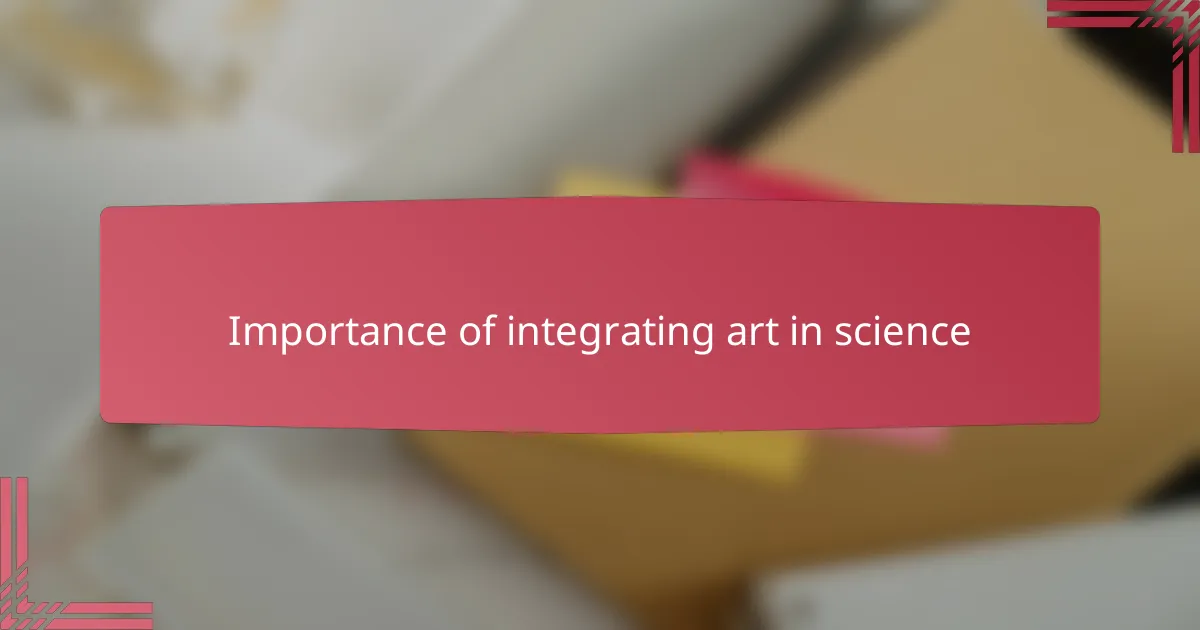
Importance of integrating art in science
Art is often seen as separate from science, but in my experience, blending the two enriches students’ understanding and sparks curiosity. When I first started incorporating drawing and creative projects into my science lessons, I noticed students who usually struggled to engage suddenly became more invested and excited.
Why does art matter so much in science? From what I’ve seen, it helps translate complex concepts into something tangible and relatable. I recall a moment when a student’s detailed model of the water cycle revealed not only their grasp of the process but also their personal connection to the environment—something numbers alone couldn’t achieve.
Integrating art also nurtures diverse ways of thinking. It allows students to approach scientific problems creatively and critically, which is crucial for innovation. I believe that fostering this creative mindset in the classroom prepares learners not just for tests, but for real-world challenges where science and imagination must work hand in hand.
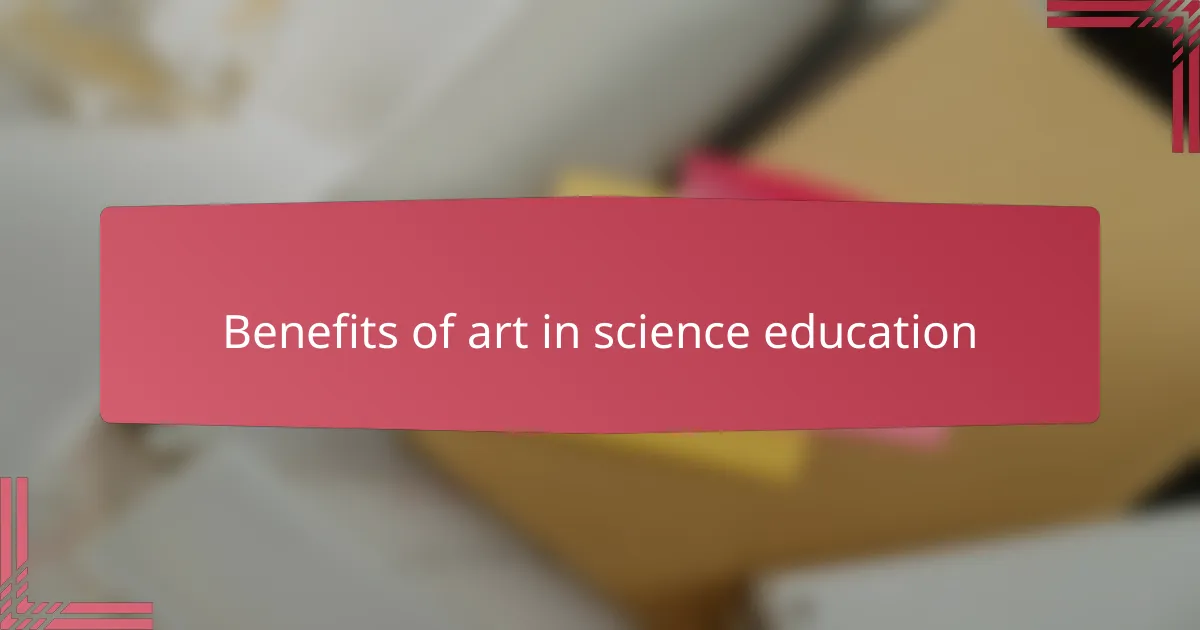
Benefits of art in science education
One of the biggest benefits I’ve noticed when blending art into science lessons is how it deepens students’ comprehension. When learners sketch or visualize scientific ideas, they move beyond memorizing facts—they begin to truly understand the processes and relationships. I remember a student who struggled with the concept of cell structure but, after drawing each part, was able to explain it confidently to the class.
Have you ever seen a classroom light up with curiosity? That’s what happens when we bring creativity into science. Art invites exploration and questions, making abstract theories more accessible and exciting. It also helps students express their unique perspectives, which I find incredibly enriching for classroom discussions.
Art in science education also cultivates critical skills like observation and interpretation. These are not just useful for scientists but for any thoughtful citizen. I’ve witnessed how encouraging students to create scientific diagrams or models enhances their attention to detail and sharpens their reasoning—a practice that benefits them far beyond the science lab.
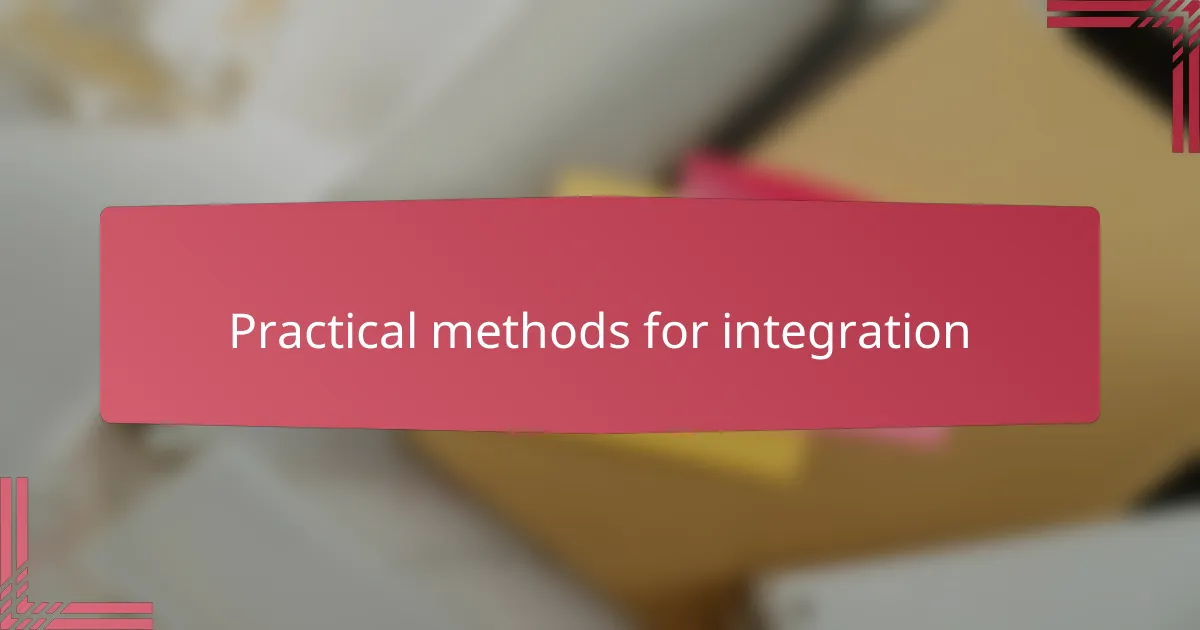
Practical methods for integration
When I first started weaving art into my science lessons, I found that simple activities like sketching concepts or creating visual models made a world of difference. Have you ever noticed how drawing forces you to slow down and really observe? That’s exactly what my students experienced—they engaged more deeply because they had to interpret and represent ideas in their own way.
Another practical method that worked well for me was incorporating storytelling alongside visuals. Asking students to tell the story of a scientific phenomenon through comics or illustrated narratives not only sparked creativity but also helped them grasp the sequence and cause-effect relationships. It was impressive to see how students who usually shied away from science became eager historians of molecules and ecosystems.
I also experimented with group projects where students collaboratively designed posters or sculptures related to the lesson topic. This hands-on teamwork not only made the science tangible but built communication and critical thinking skills. Have you tried mixing art and science in this way? From my experience, it turns lessons into lively conversations and shared discoveries.
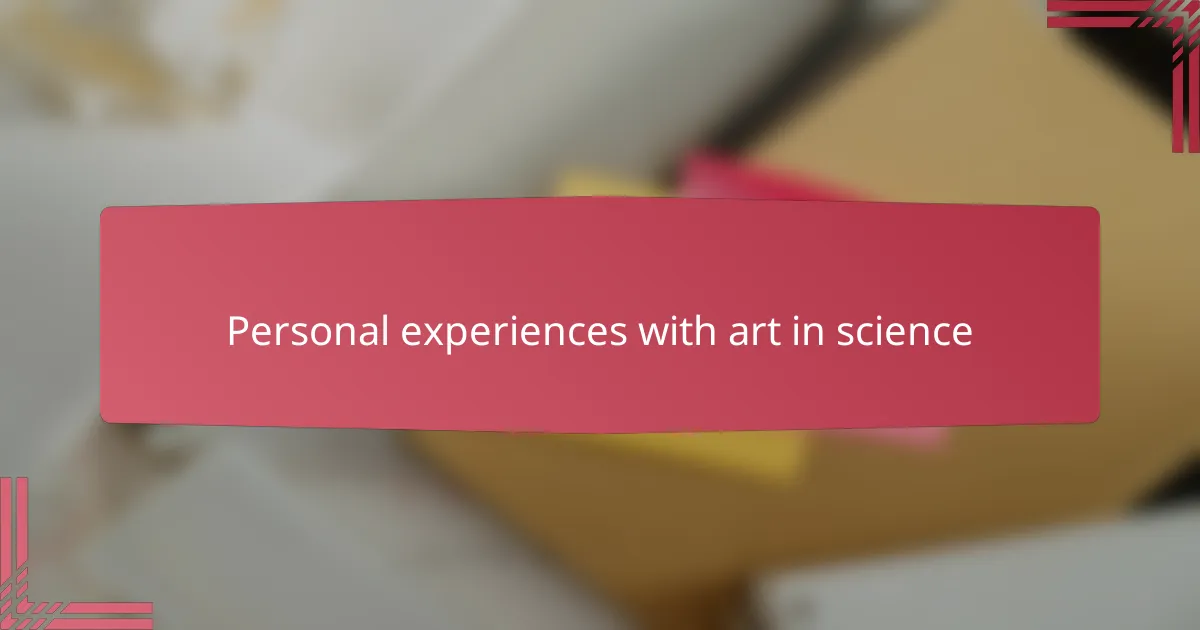
Personal experiences with art in science
I recall a particular science lesson where I asked my students to illustrate the life cycle of a butterfly. Watching them translate microscopic changes into vivid drawings was eye-opening—it wasn’t just about getting facts right; they were telling a story through art. Have you ever noticed how creativity can reveal what students really understand beneath the surface?
There was also a time when a hesitant student, usually quiet during science discussions, expressed complex ideas through a sculpture she created to represent the planet’s layers. That moment reminded me how art can give a voice to those who struggle with traditional methods of expression. It made me rethink what it means to “know” something in science.
I’ve found that integrating art creates emotional connections to scientific content that purely factual teaching often misses. When a student colors a seismic fault line or paints a coral reef, I see not only engagement but a budding sense of care and curiosity about the natural world. Doesn’t that feel like the true goal of education?
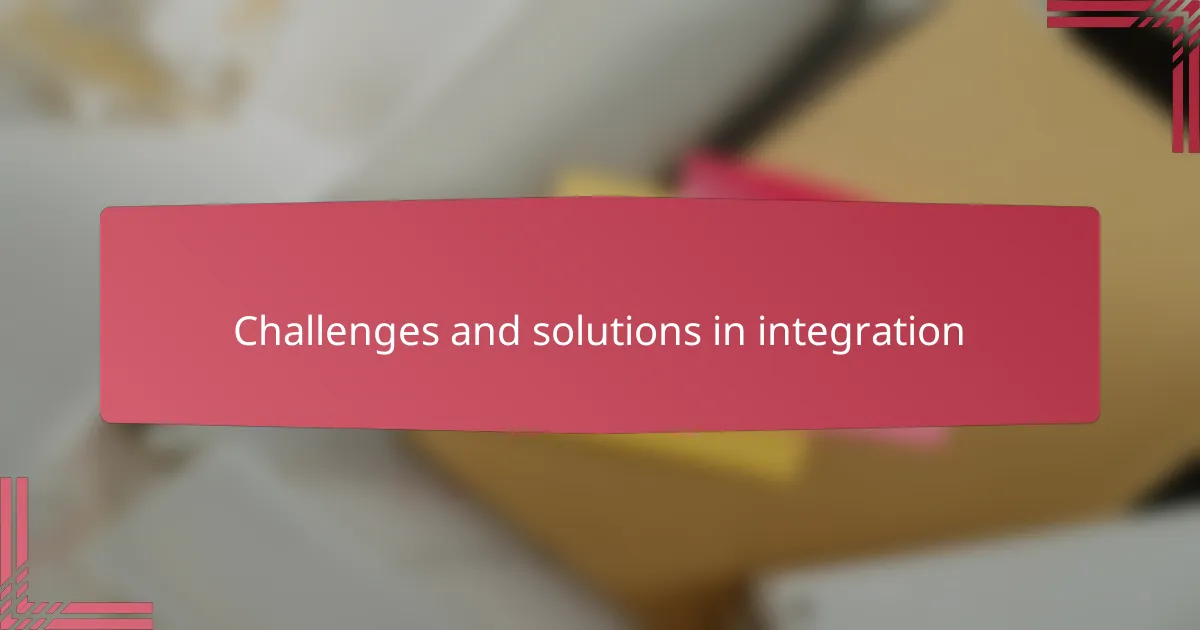
Challenges and solutions in integration
One challenge I often face when integrating art into science lessons is time—there’s always so much content to cover, and adding artistic activities can feel like a luxury. But I’ve learned to view these moments not as interruptions but as essential, deeper pauses. Have you found that allowing students space to create actually helps them absorb the material better, even if it seems to take more time upfront?
Another hurdle is resistance from colleagues or even students who see art and science as completely separate. I encountered this skepticism early on, with some peers questioning whether art belonged in a “serious” science classroom. What helped me was showing tangible examples—like a student’s detailed diagram or a group story project—that proved how creativity can clarify complex concepts and boost engagement.
Sometimes, the biggest challenge is the lack of resources or support to effectively blend these subjects. I remember feeling frustrated when I didn’t have access to art supplies or enough planning time. In response, I started using simple, no-cost materials and digital tools, making integration more feasible. Could small adaptations like these be the key to overcoming practical barriers in your own teaching?